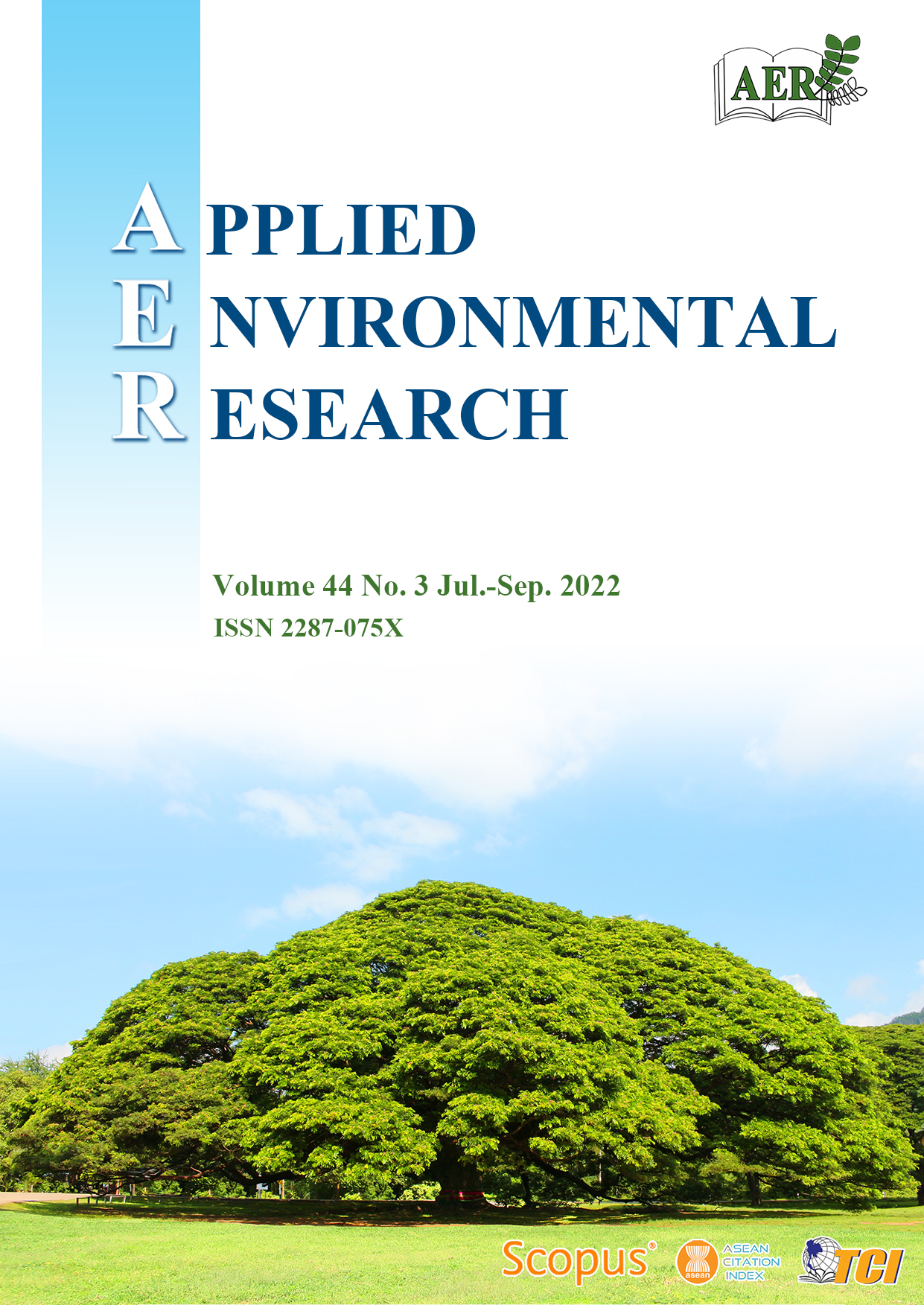Performance of Porous Substrates for Domestic Wastewater Treatment under Prolonged Hydraulic Retention Time
Main Article Content
Abstract
Physicochemical characteristics of porous substrates (longan biochar, corn biochar, and pumice) including specific surface area (SSA), pore volume (Vp), and cation exchange capacity (CEC) were determined. Longan biochar had the highest SSA, Vp, and CEC, followed by corn biochar and pumice. Then, columns filled with each of these 3 substrates together with gravel as a control treatment, were evaluated to compare wastewater treatment efficiency under different hydraulic retention times (HRTs). Each system had been acclimatized with wastewater for 8 weeks. Then, influent and effluent were analyzed at 1, 3, 5, and 7 day intervals. Water analysis revealed that biochar-based systems showed higher dissolved oxygen (DO) development and greater removal of biochemical oxygen demand (BOD5), total suspended solids (TSS), ammonium (NH4-N), total Kjeldahl nitrogen (TKN), and nitrate (NO3-N) than pumice and gravel-based systems. Prolongation of HRT significantly increased NO3-N removal and slightly increased BOD5 and TSS removal. Both BOD5 and TSS removal in biochar-based systems after 1 day HRT was about 93–94% while they significantly increased with HRT extension to a high of 97–98%. Furthermore, NO3-N removal in biochar-based systems increased from 47–48% after 1 day HRT to 80% after 5–7 days HRT. In addition, NH4-N and TKN removal was influenced by both substrate and HRT with significant interaction between these two factors. Longan biochar-based systems, in particular eliminated almost 90% of both NH4-N and TKN and the removal efficiency improved significantly after HRT was extended. Meanwhile, both NH4-N and TKN removal were only 20–30% in the gravel-based systems and 50-60% in pumice-based system. The study suggests that longan biochar is the most effective substrate. Longer HRTs were also found to increase the efficiency of removing organic matter and nitrogen.
Article Details

This work is licensed under a Creative Commons Attribution-NonCommercial 4.0 International License.
Published articles are under the copyright of the Applied Environmental Research effective when the article is accepted for publication thus granting Applied Environmental Research all rights for the work so that both parties may be protected from the consequences of unauthorized use. Partially or totally publication of an article elsewhere is possible only after the consent from the editors.

